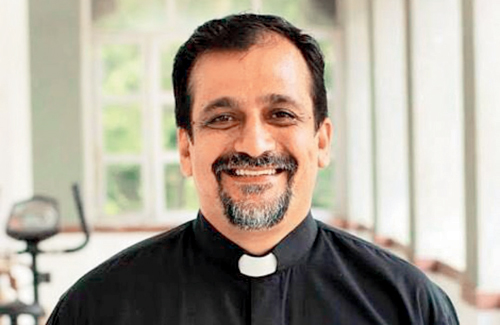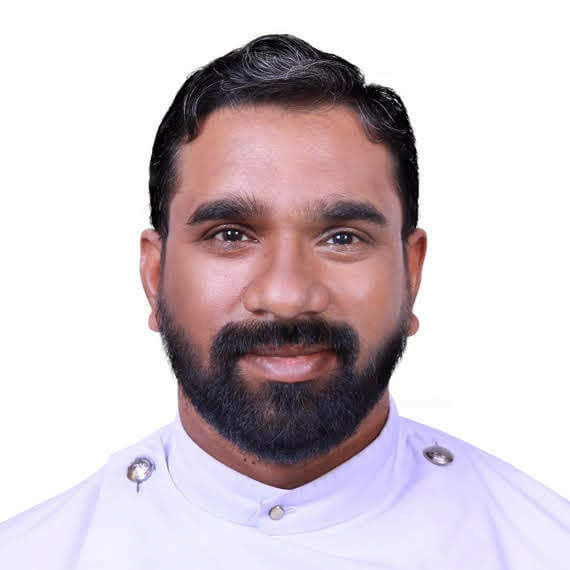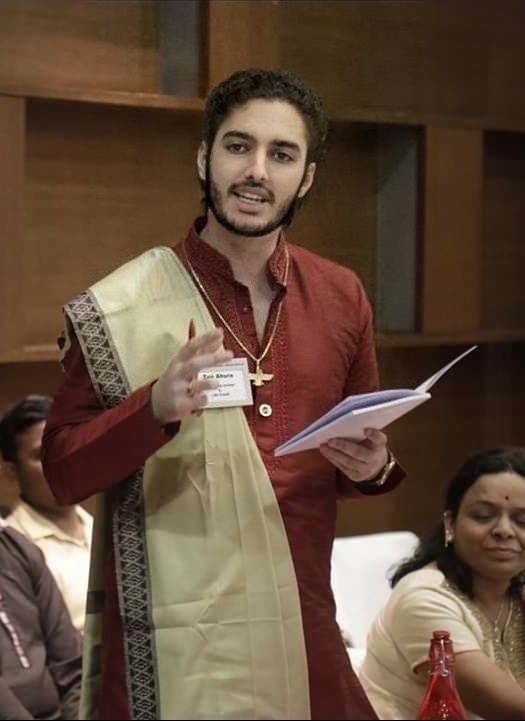Photo courtesy of Anna Shvets/Pexels
It isn’t often that one gets to say I witnessed real change in my lifetime. In many ways, I still struggle to wrap my head around the events of September 6, 2018.On that wondrous day, despite several roadblocks, the Supreme Court of India delivered the verdict that led to the reading down of Section 377, thereby allowing sexual union between consenting queer individuals. For the LGBTQ+ folx of India, seeing this archaic law amended was nothing short of a miracle. However, amidst the jubilant choruses that echoed across the nation, there were some sour notes.Religious leaders in India have been up in arms from the very moment the Delhi High Court first struck down Section 377 back in 2009. The verdict of course was later overturned in 2013 by the Supreme Court. One could say that’s perhaps the last time all religions joined hands in holy bigotry. But enough time has passed now, and one has to wonder that given the ever-shifting narrative around queer rights, where do our religious bodies stand two years after the momentous verdict.So I set out on a task to speak to priests and scholars of as many major religions in the country as possible.My first goal was to check up on my own faith. It has been a while since I have been back inside a church. And now, post COVID-19, the fact that no one can go makes me low-key happy. Being raised a Roman Catholic, I was constantly told how immoral homosexuality is, and the infamous verse from Leviticus Chapter 18 Verse 22 was often tossed around: “You shall not lie with a male as with a woman; it is an abomination.”I got a chance to speak to Father Nigel Barrett, who is the spokesperson for the Archdiocese of Bombay. “Let me first clarify by saying there are two areas of consideration with regards to the Church's position on the reading down of Section 377,” he said. “There is a civil/criminal area of consideration and the moral area of consideration. Though the Church holds that in the case of the LGBTQ+ individuals, exercise of their orientation is immoral, it does not need to be criminalised. Therefore the reading down of section 377 was welcome.”The tonal shift is a welcome one, given that Pope Francis himself has been vocal about accepting queer individuals with open arms. However, there is still discernible change to be seen when it comes to accepting alternative sexual lifestyles on the ground level. Are homosexuals welcome in the Catholic Church? Some men and women who struggle with same-sex attractions wonder if there’s any hope for them to be welcomed in or back to the Church. “The answer to that question,” Fr. Nigel says, “is an unambiguous yes. To accept a person means that we love and welcome that person with all their strengths and weaknesses. Acceptance of another human being does not necessarily mean that we will agree with all his or her decisions and choices.” And while that is definitely growth from a religious standpoint, I can’t help but note that my queerness is still considered a “weakness”, and I am far from being celebrated for it. However, all is not lost for Christianity. Reverend Abin Srambical is the assistant vicar at St. Thomas Mar Thoma Church in Karol Bagh, Delhi. He says, “Our church has been interacting with members of the LGBTQIA community since 2010, around the time when Section 377 first came into public light. In 2014, once the NALSA judgement was passed, our church started launching programmes for transgendered individuals. Called Navodaya, the movement aims at creating basic awareness, busting myths and creating employment opportunities for members of the transgender community.”The St. Thomas Mar Thoma Church is leading by example. By 2017-18, all of their Churches had adopted the movement. Rev. Abin adds, “Although the community took time to trust us entirely, we kept at it, and soon we noticed a gradual change.” When asked if he sees a gay marriage ceremony being held within his Chruch any time soon, he comments, “Churches believe in the law of the land. And since the law doesn’t allow queer unions, getting married inside a church might still not be possible in the near future.”
However, all is not lost for Christianity. Reverend Abin Srambical is the assistant vicar at St. Thomas Mar Thoma Church in Karol Bagh, Delhi. He says, “Our church has been interacting with members of the LGBTQIA community since 2010, around the time when Section 377 first came into public light. In 2014, once the NALSA judgement was passed, our church started launching programmes for transgendered individuals. Called Navodaya, the movement aims at creating basic awareness, busting myths and creating employment opportunities for members of the transgender community.”The St. Thomas Mar Thoma Church is leading by example. By 2017-18, all of their Churches had adopted the movement. Rev. Abin adds, “Although the community took time to trust us entirely, we kept at it, and soon we noticed a gradual change.” When asked if he sees a gay marriage ceremony being held within his Chruch any time soon, he comments, “Churches believe in the law of the land. And since the law doesn’t allow queer unions, getting married inside a church might still not be possible in the near future.” Another Abrahamic religion that has always been staunchly against queer identities is Islam. And not much has changed. Getting hold of a Maulana who didn’t scoff at my idea was tough. But I did get to talk to Z, on the condition of anonymity. Z is an Islamic scholar who has also spent a part of his life outside India. He maintains that his personal views are notwithstanding the fact that within Islam, the act of homosexuality is “absolutely haram”. He adds, “If you are caught being dheela in the gulf countries, they will kill you. And many people within Islam still believe that’s how it should be dealt with.”I wanted to understand from where this much hate has been created against queer people. Z claims, “80 percent of the Muslims living in India do not understand the Quran even if they can read the Arabic verses. So everything is based on how a certain Maulana interprets it.” He also maintains that to this day, conversion therapies by some Maulanas are also rampant within Islam.In stark contrast, we have Hinduism, which has historically been kinder to same-sex unions—a fact that right-wing homosexuals won’t stop harping about. I reached out to several Hindu religious leaders, but most of them refused to go on the record with their response. The one person who did enlighten me about the Hindu stance on the topic was a young student—let’s call him D—who also happens to be a Hindu scholar. D himself identifies as queer and has been been delving deep into philosophical aspects of Hinduism, such as the Upanishads and the Bhagavad Gītā, from a very young age.He says, “During my teenage years, I was struggling with my sexual identity internally, whilst facing heavily heteronormative and anti-LGBTQ+ dialogue and thinking in the environment around me. So I decided to look within the narrative portion and Dharmashāstras (codes of law) in the Hindu scriptures.” What he found were numerous stories and verses which expressed support for alternative sexualities. “The tales within the scriptures seemed almost alien to the homophobic attitudes rampant in modern-day Hindu society,” he says. He also feels that attitudes within Hindu families are changing since the repeal of Section 377. “A lot of Hindu queer individuals have felt comfortable coming out to their friends, some to their families and society. Hindu queers, through their personal research, and by meeting others, are finding that there is no Dharmic opposition to their identity; they can reconcile their faith and their sexuality.”One religious group that has always fascinated me is the Sikh community. They happen to exhibit incredible vigour and gusto in the toughest of times, always helping others and feeding and clothing them—there’s hardly any group that is as compassionate as them.But when it comes to accepting queer life choices, the community faces the same troubles as others. Speaking to VICE, Pritam Singh, a Sikh priest, insists, “Sikhs will never be for it.”Singh is a 72-year-old man who’s seen a thing or two in his lifetime. “I am personally not against LGBTQ+ people. No child should be curbed at that point in their lives. However, we follow the Guru Granth Sahib as our holy word. We pray to it and get all our answers from it. There’s only Nar (male) and Naari (female) in our scriptures.” Yet Singh is hopeful that with time parents will understand that they can have kids who are both, religious and queer. “I know of highly intellectual individuals who happen to be homosexual. If they were stifled from a young age, they would never reach their full potential.”Zen Ahura belongs to a community that has often found itself either caricatured in films or joked about relentlessly in comedy sets. The Parsis are a significantly smaller group today than when they first arrived in India, and Zen acknowledges it. He became a priest of the Zoroastrian community at the age of 13. A leadership trainer and a life coach from Pune, he says, “Culturally within our community, no one cares or condemns homosexuality, but today some may say it has become a matter of necessity for us to procreate to add strengths to our numbers.” He mentions that within the Zoroastrian community, they stress on three virtues: good thoughts, good words, good deeds. “Everything else is a result of how your energies reflect, either positively or negatively,” he adds.
Another Abrahamic religion that has always been staunchly against queer identities is Islam. And not much has changed. Getting hold of a Maulana who didn’t scoff at my idea was tough. But I did get to talk to Z, on the condition of anonymity. Z is an Islamic scholar who has also spent a part of his life outside India. He maintains that his personal views are notwithstanding the fact that within Islam, the act of homosexuality is “absolutely haram”. He adds, “If you are caught being dheela in the gulf countries, they will kill you. And many people within Islam still believe that’s how it should be dealt with.”I wanted to understand from where this much hate has been created against queer people. Z claims, “80 percent of the Muslims living in India do not understand the Quran even if they can read the Arabic verses. So everything is based on how a certain Maulana interprets it.” He also maintains that to this day, conversion therapies by some Maulanas are also rampant within Islam.In stark contrast, we have Hinduism, which has historically been kinder to same-sex unions—a fact that right-wing homosexuals won’t stop harping about. I reached out to several Hindu religious leaders, but most of them refused to go on the record with their response. The one person who did enlighten me about the Hindu stance on the topic was a young student—let’s call him D—who also happens to be a Hindu scholar. D himself identifies as queer and has been been delving deep into philosophical aspects of Hinduism, such as the Upanishads and the Bhagavad Gītā, from a very young age.He says, “During my teenage years, I was struggling with my sexual identity internally, whilst facing heavily heteronormative and anti-LGBTQ+ dialogue and thinking in the environment around me. So I decided to look within the narrative portion and Dharmashāstras (codes of law) in the Hindu scriptures.” What he found were numerous stories and verses which expressed support for alternative sexualities. “The tales within the scriptures seemed almost alien to the homophobic attitudes rampant in modern-day Hindu society,” he says. He also feels that attitudes within Hindu families are changing since the repeal of Section 377. “A lot of Hindu queer individuals have felt comfortable coming out to their friends, some to their families and society. Hindu queers, through their personal research, and by meeting others, are finding that there is no Dharmic opposition to their identity; they can reconcile their faith and their sexuality.”One religious group that has always fascinated me is the Sikh community. They happen to exhibit incredible vigour and gusto in the toughest of times, always helping others and feeding and clothing them—there’s hardly any group that is as compassionate as them.But when it comes to accepting queer life choices, the community faces the same troubles as others. Speaking to VICE, Pritam Singh, a Sikh priest, insists, “Sikhs will never be for it.”Singh is a 72-year-old man who’s seen a thing or two in his lifetime. “I am personally not against LGBTQ+ people. No child should be curbed at that point in their lives. However, we follow the Guru Granth Sahib as our holy word. We pray to it and get all our answers from it. There’s only Nar (male) and Naari (female) in our scriptures.” Yet Singh is hopeful that with time parents will understand that they can have kids who are both, religious and queer. “I know of highly intellectual individuals who happen to be homosexual. If they were stifled from a young age, they would never reach their full potential.”Zen Ahura belongs to a community that has often found itself either caricatured in films or joked about relentlessly in comedy sets. The Parsis are a significantly smaller group today than when they first arrived in India, and Zen acknowledges it. He became a priest of the Zoroastrian community at the age of 13. A leadership trainer and a life coach from Pune, he says, “Culturally within our community, no one cares or condemns homosexuality, but today some may say it has become a matter of necessity for us to procreate to add strengths to our numbers.” He mentions that within the Zoroastrian community, they stress on three virtues: good thoughts, good words, good deeds. “Everything else is a result of how your energies reflect, either positively or negatively,” he adds. The Parsis have also had to adapt to local laws. While ancient India embraced queerness, colonized India, not so much. Section 377 is nothing but an extension of that very problem. Today as the Parsi community finds a way to define its relationship with its queer patrons, Zen says, “No one can stay mad at their child for that long.”Therein lies the underlying hope. As queer people in India try to reconcile with their faith, one thing is for certain: They can’t stay mad at us forever. From 22-year-old scholars to 72-year-old priests, they all agree that there is a long way to go for integration and acceptance, but change is inevitable. Two years after Section 377 got struck down, we may not always have God on our side, but we may just have to rely on the next best thing: the humanity of God’s followers.Follow Navin Noronha on Instagram.
The Parsis have also had to adapt to local laws. While ancient India embraced queerness, colonized India, not so much. Section 377 is nothing but an extension of that very problem. Today as the Parsi community finds a way to define its relationship with its queer patrons, Zen says, “No one can stay mad at their child for that long.”Therein lies the underlying hope. As queer people in India try to reconcile with their faith, one thing is for certain: They can’t stay mad at us forever. From 22-year-old scholars to 72-year-old priests, they all agree that there is a long way to go for integration and acceptance, but change is inevitable. Two years after Section 377 got struck down, we may not always have God on our side, but we may just have to rely on the next best thing: the humanity of God’s followers.Follow Navin Noronha on Instagram.
Advertisement
Advertisement

Advertisement

Advertisement
Advertisement
